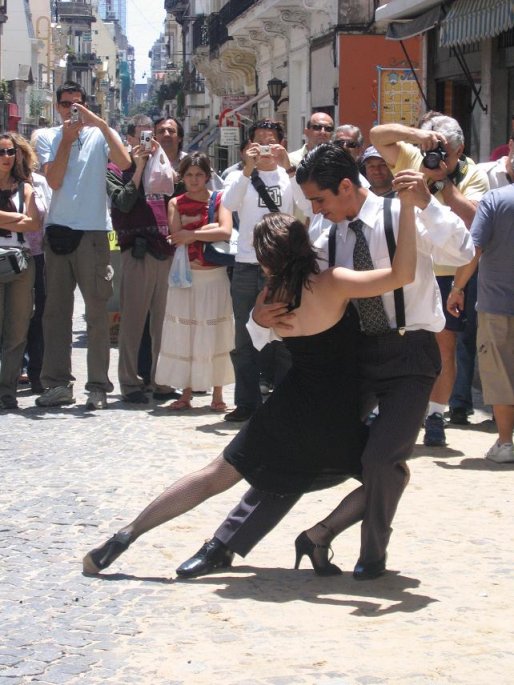
Your Turn: It Takes Two to Tango
Literally. Reader Kelsey Mulder shares what tango lessons have taught her about riding.
I’ve recently moved to a new town where, unfortunately, the local riding school is too far away and too expensive for my meager first-big-girl-job salary. I’ve had to find other ways of keeping myself entertained between weekend visits to my friends’ farm. When a coworker invited me to Argentine tango lessons, I figured I could at least give it a try. After only a few lessons, I was hooked.
Let’s start with how you get a dance partner at a Milonga (tango dance party). The leader (the man) will try to make eye contact with me (the follower) from across the room. If I want to dance with him, I’ll make eye contact and keep that eye contact as he walks toward me and collects me. If I don’t want to dance with him, I avoid eye contact at all costs. It’s the tango version of, “You want to take me away from my friends and fresh grass? I’d rather fart in your face and run to the far corner of the field, sucker!”
I’m by no means an expert in tango: I’m hardly even a beginner. But what I do know is that tango is quite different from other forms of dance. Argentine tango is nothing like the choreographed dance scenes from our favorite movies or what we see on Dancing with the Stars. Instead, there are certain tango dance steps that everybody knows, but it’s up to the leader (the man) to choose which steps we’ll do and in which sequence we’ll do them. The leader the encourages the follower (me) into the move by shifting his weight left, right, backwards, or forwards or making space by moving our arms away from our bodies. What’s even trickier is that the follower does most of the moves walking backwards, not knowing where we’re going or what we might crash into.
Every week, my instructor talks about how tango is a conversation. The tricky part is, you can’t verbally tell your partner what you’re about to do. You can’t point to where you want your partner to move. You can’t even subtly nod your head or point your nose in the right direction. You have to lead them in a way that the follower instinctively knows what to do. When I dance with a good leader, I don’t even think about what my feet are doing. We are suddenly moving in sync without instruction and without thought. When it happens, it’s absolutely magical.
Through tango, I’ve been put in the role of all the horses I’ve ridden over the years. The poor beasts have always tried their best to guess what I’ve been asking them to do without the luxury of talking it out. I’m ashamed to say that many times I’ve been frustrated with the horse for not getting the right movement or the right striding, when actually I should have stopped and asked myself, “Am I asking for this action in a way my horse can understand? How could they be confused by how I’m asking?” More often than not, I’d argue the issue has been with me, not the poor horse trying his heart out to make me happy.
Next time I’m out riding, I know I’ll have my tango lessons in mind and remember to ask for movements clearly and nicely. If I don’t get the expected result, I need to remember it’s most likely me who has the issue, not the horse. I have a newfound respect for what our horses do for us day in and day out: listening, trusting, and trying their hearts out.
Is it “Your Turn”? We love sharing reader submissions — email yours to [email protected].







Leave a Comment